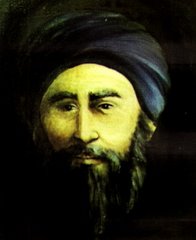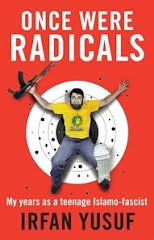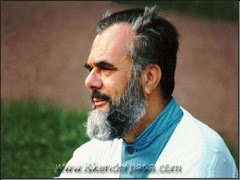I have a confession to make. I am a huge fan of what is known as “traditional Islam” (let’s call it “TI”). This is a method of teaching and learning the classical sciences of Islam.
I understand TI goes something like this. You decide what classical Islamic subject or subjects you wish to study. You sit with someone qualified to teach at least the subject you want to learn. You sit and learn that subject with that teacher, either on an individual basis or in a class.
Once the teacher is satisfied with your mastery of the subject, he/she gives you authorisation to teach. That authorisation is called an ijaza, and it states the limits within which you can teach the subject. It could be as broad as more than one discipline or as narrow as a chapter of a book.
Your teacher is able to give you an ijaza because he/she has an ijaza from his/her teacher, who in turn has an ijaza from his/her teacher etc etc. This chain of ijaza is known as a sanad.
I haven’t done any research on the matter, but I suspect most qualified imams in Australia have learned their classical Islamic knowledge this way. Certainly this is how Islamic sciences are taught in classical institutions such as Dar al-Uloom Deoband in India or in similar classical institutions in Yemen, Syria and Morocco.
TI is a great method of keeping alive our classical Islamic tradition. Some of the great emerging voices of Islamic scholarship in the West have studied and qualified under this methodology, including Hamza Yusuf Hanson, Zaid Shakir, Nuh Ha Mim Keller and our very own (as far as Sydney-siders are concerned) Naeem Abdul Wali.
These scholars are at the forefront of communicating Islamic ideas in a manner relevant to Western communities, Muslim or otherwise. But are they able to do this just because of TI? Does anyone honestly believe that, when faced with a contemporary challenge, Western TI scholars only refer to classical commentaries?
I asked this question of Azhar Usman, stand-up comedian and director of the Nawawi Foundation, a US-based think tank which promotes Islamic sciences in the TI tradition. Other directors of the Nawawi Foundation include Dr Ingrid Mattson, who studied Islam in modern universities and is current President of the Islamic Society of North America (the US and Canadian version of our “AFIC”).
The Chairman and Scholar-in-Residence of the Foundation is Dr Umar Faruq Abd-Allah, one of a galaxy of TI scholars in the US. Apart from studying classical sciences abroad, Dr Abd-Allah also did a PhD in Islamic Studies at Chicago University under one Professor Fazlur Rahman.
Why am I mentioning all this? Of what relevance does all this have to Australia?
Following the terror attacks of September 11, scholars of TI have come to the forefront of not only condemning the attacks but also identifying the root causes of the attacks. Azhar Usman believes that what tempted some Muslims to sympathise the attackers was a form of Islam which teaches us Western Muslims to regard only a narrow set of things as “Islamic” and to reject everything else as “un-Islamic”.
TI is different. TI regards everything as potentially Islamic with the exception of those things which are clearly proscribed in the sacred law of Islam (known as the sharia) as un-Islamic.
Hence, TI practitioners like Dr Abd-Allah contend that there is nothing un-Islamic about communicating Islamic ideas using stand-up comedy. When the Nawawi Foundation takes people on study tours to various parts of the current (or, in the case of Spain, former) “Islamic” world, Azhar Usman usually comes along to act as “court jester”, performing a show for his fellow tourists.
Usman told me he regards Islam as like a clear spring with no odour or taste or colour except for those provided by the elements of its path. Hence, Islam can be communicated using a variety of cultural methods.
Usman’s hero is one of the great scholars and communicators of Islam in Indonesia, known to his people as Sunan Kalijaga. The genius of Kalijaga lay in the fact that he was able to combine essentially traditional cultural symbols (wayang shadow puppetry and gamelan orchestral music) to communicate classical Islamic ideas. Today, wayang and gamelan are regarded as classical methods of communicating Islam in the world’s largest Muslim country. In Indonesia, the methods of Sunan Kalijaga are part of TI.
So there are some Australian Muslims claiming to represent TI who pretend that studying Islam in a conventional university is not consistent with TI principles. They criticise institutions such as the Centre for Excellence in Islamic Studies headed by Professor Abdullah Saeed of the University of Melbourne.
But as I learned from Azhar Usman, if TI can recognise the value of communicating Islamic ideas using traditional cultural symbols, why can’t it recognise Islam communicated in a conventional university?
Or to put it in the Prophet’s (s) terms: “Wisdom is the lost property of the believer …”
(This article was first published on 8 August 2007 in Salam, the official publication of the Federation of Australian Muslim Students & Youth or FAMSY)













